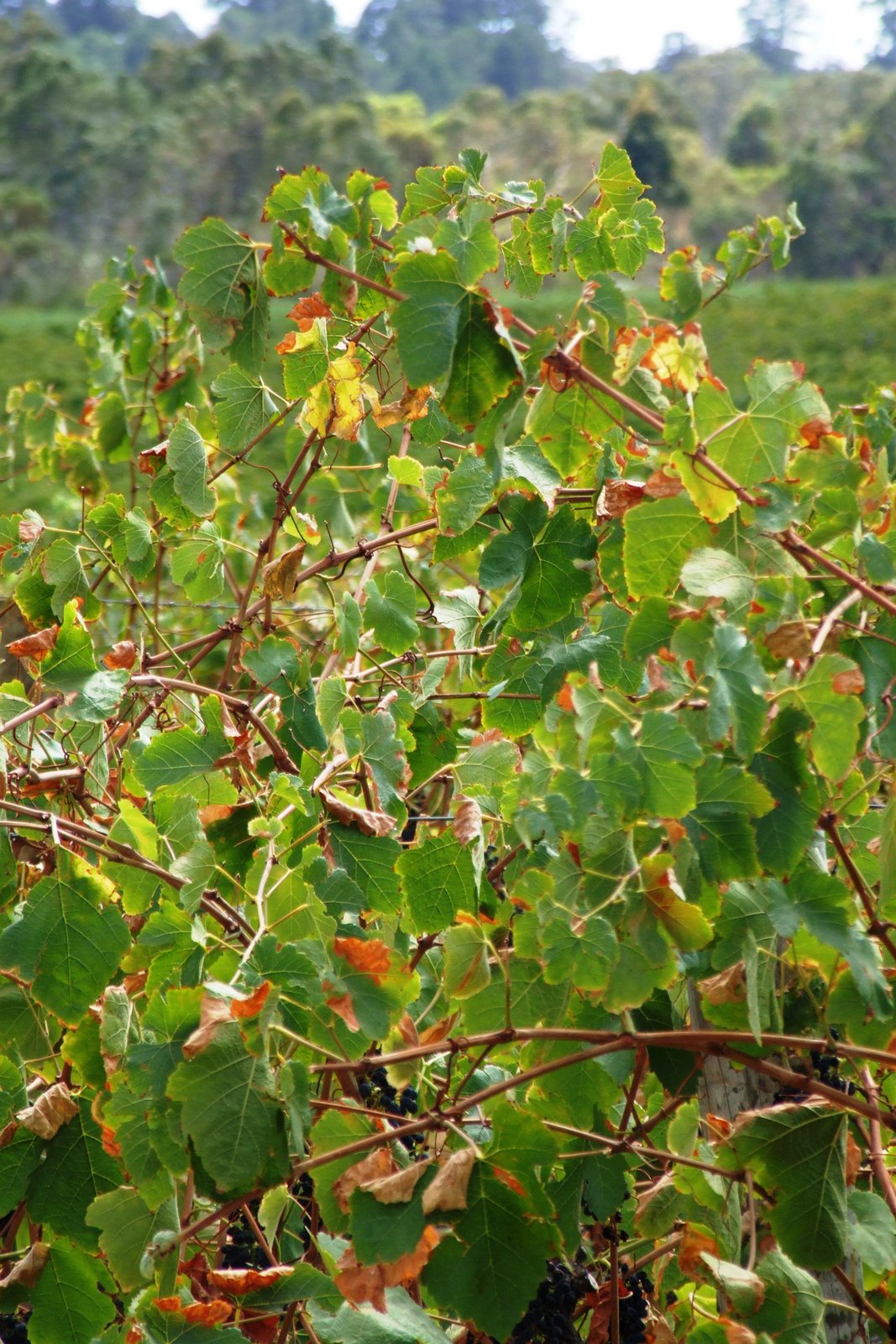Summary from GWRDC research.
A vineyard with leaf scorching at the point of harvest (E-L 38).
The importance of the post-harvest period is largely determined by climate, variety, yield, and management prior to harvest. Vines will tolerate a season or two with limited post-harvest irrigation, but productivity will eventually be reduced if this continues over many seasons. Although beyond the scope of this module, the importance of long term planning needs to be emphasized if water shortages are expected to continue. This includes understanding that cropping levels, together with effective salinity management, are two key factors in determining the sustainability of vines with reduced water supply.
Uptake of other minerals may be equally important during the post-harvest period, but relative to nitrogen, a lot less is known as to their role as reserves. The cycling of nutrients, and thus ability to store and re-mobilize again in spring, depends on their mobility within the plant. This is high for all the macronutrients, except calcium, which has low mobility. With the exception on manganese, which is also low, all the other micro nutrients have intermediate mobility.
As a rough guide to the relative importance of different nutrient reserves (where such information exists), studies with whole mature vines have shown that about 50% of nitrogen and phosphorus in the new seasons canopy comes from stored reserves. Around 15% of potassium comes from reserves, but less than 5% of magnesium and calcium.
A considerable proportion of these nutrient reserves can be up-taken and stored in the post-harvest period the previous year, with about one third of the annual nitrogen and phosphorus requirements stored after harvest, and about 20% for magnesium and calcium, and 15% for potassium. As indicated by some macro nutrient level increases during the post-harvest period, the application of fertiliser during this period allows nutrient status to improve and reduces potential deficiencies in the following growing season. It has been shown, for example, that post harvest nitrogen application is reflected in the petiole concentration at flowering. Post-harvest nutrient applications may therefore make an important contribution to the growth and general health of vines in the following season.
Key points regarding nutrient reserves are:
• Like carbohydrates, grapevines require a supply of nutrients from stored reserves to support growth in early spring. Nitrogen in the roots and wood follows a similar pattern to carbohydrates (although much lower in concentration), and post-harvest applications will influence the nitrogen status of the vine in the following season.
• The role of other nutrient reserves is less well understood, but post-harvest uptake of phosphorus does appear to be important. To a lesser extent, magnesium, calcium and potassium uptake after harvest will also contribute to growth in the following spring. Little is known about the role of other nutrients carried over winter in grapevine tissues.

